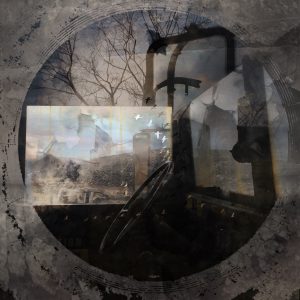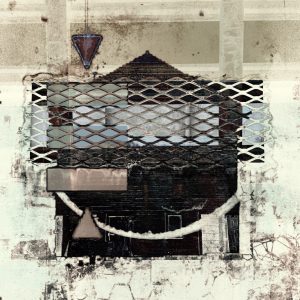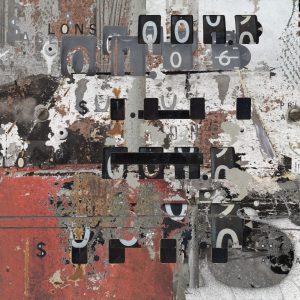Below you will find a brief glossary of literary terms. More extensive glossaries can be found online. You might look here and here to determine which you find most helpful and easy to navigate. The glossary below has been adapted from Bedford/St. Martin Press.
 Allegory
Allegory
A narration or description usually restricted to a single meaning because its events, actions, characters, settings, and objects represent specific abstractions or ideas. Although the elements in an allegory may be interesting in themselves, the emphasis tends to be on what they ultimately mean. Characters may be given names such as Hope, Pride, Youth, and Charity; they have few if any personal qualities beyond their abstract meanings. These personifications are not symbols because, for instance, the meaning of a character named Charity is precisely that virtue. See also symbol.
Allusion
A brief reference to a person, place, thing, event, or idea in history or literature. Allusions conjure up biblical authority, scenes from Shakespeare’s plays, historic figures, wars, great love stories, and anything else that might enrich an author’s work. Allusions imply reading and cultural experiences shared by the writer and reader, functioning as a kind of shorthand whereby the recalling of something outside the work supplies an emotional or intellectual context, such as a poem about current racial struggles calling up the memory of Abraham Lincoln.
Archetype
A term used to describe universal symbols that evoke deep and sometimes unconscious responses in a reader. In literature, characters, images, and themes that symbolically embody universal meanings and basic human experiences, regardless of when or where they live, are considered archetypes. Common literary archetypes include stories of quests, initiations, scapegoats, descents to the underworld, and ascents to heaven.
 Dénouement
Dénouement
A French term meaning “unraveling” or “unknotting,” used to describe the resolution of the plot following the climax. See also plot, resolution.
Exposition
A narrative device, often used at the beginning of a work, that provides necessary background information about the characters and their circumstances. Exposition explains what has gone on before, the relationships between characters, the development of a theme, and the introduction of a conflict. See also flashback.
Foreshadowing
The introduction early in a story of verbal and dramatic hints that suggest what is to come later.
Irony
A literary device that uses contradictory statements or situations to reveal a reality different from what appears to be true. It is ironic for a firehouse to burn down, or for a police station to be burglarized. Verbal irony is a figure of speech that occurs when a person says one thing but means the opposite. Sarcasm is a strong form of verbal irony that is calculated to hurt someone through, for example, false praise. Dramatic irony creates a discrepancy between what a character believes or says and what the reader or audience member knows to be  true. Tragic irony is a form of dramatic irony found in tragedies such as Oedipus the King, in which Oedipus searches for the person responsible for the plague that ravishes his city and ironically ends up hunting himself. Situational irony exists when there is an incongruity between what is expected to happen and what actually happens due to forces beyond human comprehension or control. The suicide of the seemingly successful main character in Edwin Arlington Robinson’s poem “Richard Cory” is an example of situational irony. Cosmic irony occurs when a writer uses God, destiny, or fate to dash the hopes and expectations of a character or of humankind in general. In cosmic irony, a discrepancy exists between what a character aspires to and what universal forces provide. Stephen Crane’s poem “A Man Said to the Universe” is a good example of cosmic irony, because the universe acknowledges no obligation to the man’s assertion of his own existence.
true. Tragic irony is a form of dramatic irony found in tragedies such as Oedipus the King, in which Oedipus searches for the person responsible for the plague that ravishes his city and ironically ends up hunting himself. Situational irony exists when there is an incongruity between what is expected to happen and what actually happens due to forces beyond human comprehension or control. The suicide of the seemingly successful main character in Edwin Arlington Robinson’s poem “Richard Cory” is an example of situational irony. Cosmic irony occurs when a writer uses God, destiny, or fate to dash the hopes and expectations of a character or of humankind in general. In cosmic irony, a discrepancy exists between what a character aspires to and what universal forces provide. Stephen Crane’s poem “A Man Said to the Universe” is a good example of cosmic irony, because the universe acknowledges no obligation to the man’s assertion of his own existence.
Metaphor
A metaphor is a figure of speech that makes a comparison between two unlike things, without using the word like or as. Metaphors assert the identity of dissimilar things, as when Macbeth asserts that life is a “brief candle.” Metaphors can be subtle and powerful, and can transform people, places, objects, and ideas into whatever the writer imagines them to be. An implied metaphor is a more subtle comparison; the terms being compared are not so specifically explained. For example, to describe a stubborn man unwilling to leave, one could say that he was “a mule standing his ground.” This is a fairly explicit  metaphor; the man is being compared to a mule. But to say that the man “brayed his refusal to leave” is to create an implied metaphor, because the subject (the man) is never overtly identified as a mule. Braying is associated with the mule, a notoriously stubborn creature, and so the comparison between the stubborn man and the mule is sustained. Implied metaphors can slip by inattentive readers who are not sensitive to such carefully chosen, highly concentrated language. An extended metaphor is a sustained comparison in which part or all of a poem consists of a series of related metaphors. A controlling metaphor runs through an entire work and determines the form or nature of that work. The controlling metaphor in Anne Bradstreet’s poem “The Author to Her Book” likens her book to a child. Synecdoche is a kind of metaphor in which a part of something is used to signify the whole, as when a gossip is called a “wagging tongue,” or when ten ships are called “ten sails.” Sometimes, synecdoche refers to the whole being used to signify the part, as in the phrase “Boston won the baseball game.” Clearly, the entire city of Boston did not participate in the game; the whole of Boston is being used to signify the individuals who played and won the game. Metonymy is a type of metaphor in which something closely associated with a subject is substituted for it. In this way, we speak of the “silver screen” to mean motion pictures, “the crown” to stand for the king, “the White House” to stand for the activities of the president.
metaphor; the man is being compared to a mule. But to say that the man “brayed his refusal to leave” is to create an implied metaphor, because the subject (the man) is never overtly identified as a mule. Braying is associated with the mule, a notoriously stubborn creature, and so the comparison between the stubborn man and the mule is sustained. Implied metaphors can slip by inattentive readers who are not sensitive to such carefully chosen, highly concentrated language. An extended metaphor is a sustained comparison in which part or all of a poem consists of a series of related metaphors. A controlling metaphor runs through an entire work and determines the form or nature of that work. The controlling metaphor in Anne Bradstreet’s poem “The Author to Her Book” likens her book to a child. Synecdoche is a kind of metaphor in which a part of something is used to signify the whole, as when a gossip is called a “wagging tongue,” or when ten ships are called “ten sails.” Sometimes, synecdoche refers to the whole being used to signify the part, as in the phrase “Boston won the baseball game.” Clearly, the entire city of Boston did not participate in the game; the whole of Boston is being used to signify the individuals who played and won the game. Metonymy is a type of metaphor in which something closely associated with a subject is substituted for it. In this way, we speak of the “silver screen” to mean motion pictures, “the crown” to stand for the king, “the White House” to stand for the activities of the president.
Narrator
The voice of the person telling the story, not to be confused with the author’s voice.
With a first-person narrator, the I in the story presents the point of view of only one character. The reader is restricted to the perceptions, thoughts, and feelings of that single character. For example, in Melville’s “Bartleby, the Scrivener,” the lawyer is the first-person narrator of the story. First-person narrators can play either a major or a minor role in the story they are telling.
 An unreliable narrator reveals an interpretation of events that is somehow different from the author’s own interpretation of those events. Often, the unreliable narrator’s perception of plot, characters, and setting becomes the actual subject of the story, as in Melville’s “Bartleby, the Scrivener.” Narrators can be unreliable for a number of reasons: they might lack self-knowledge (like Melville’s lawyer), they might be inexperienced, they might even be insane. Naive narrators are usually characterized by youthful innocence, such as Mark Twain’s Huck Finn or J. D. Salinger’s Holden Caulfield.
An unreliable narrator reveals an interpretation of events that is somehow different from the author’s own interpretation of those events. Often, the unreliable narrator’s perception of plot, characters, and setting becomes the actual subject of the story, as in Melville’s “Bartleby, the Scrivener.” Narrators can be unreliable for a number of reasons: they might lack self-knowledge (like Melville’s lawyer), they might be inexperienced, they might even be insane. Naive narrators are usually characterized by youthful innocence, such as Mark Twain’s Huck Finn or J. D. Salinger’s Holden Caulfield.
An omniscient narrator is an all-knowing narrator who is not a character in the story and who can move from place to place and pass back and forth through time, slipping into and out of characters as no human being possibly could in real life. Omniscient narrators can report the thoughts and feelings of the characters, as well as their words and actions. The narrator of The Scarlet Letter is an omniscient narrator.
Editorial omniscience refers to an intrusion by the narrator in order to evaluate a character for a reader, as when the narrator of The Scarlet Letter describes Hester’s relationship to the Puritan community.
Narration that allows the characters’ actions and thoughts to speak for themselves is called neutral omniscience. Most modern writers use neutral omniscience so that readers can reach their own conclusions.
Limited omniscience occurs when an author restricts a narrator to the single perspective of either a major or minor character. The way people, places, and events appear to that character is the way they appear to the reader. Sometimes a limited omniscient narrator can see into more than one character, particularly in a work that focuses on two characters alternately from one chapter to the next. Short stories, however, are frequently limited to a single character’s point of view.
 Plot
Plot
An author’s selection and arrangement of incidents in a story to shape the action and give the story a particular focus. Discussions of plot include not just what happens, but also how and why things happen the way they do. Stories that are written in a pyramidal pattern divide the plot into three essential parts. The first part is the rising action, in which complication creates some sort of conflict for the protagonist. The second part is the climax, the moment of greatest emotional tension in a narrative, usually marking a turning point in the plot at which the rising action reverses to become the falling action. The third part, the falling action (or resolution) is characterized by diminishing tensions and the resolution of the plot’s conflicts and complications. In medias res is a term used to describe the common strategy of beginning a story in the middle of the action. In this type of plot, we enter the story on the verge of some important moment.
Point of view
Refers to who tells us a story and how it is told. What we know and how we feel about the events in a work are shaped by the author’s choice of point of view. The teller of the story, the narrator, inevitably affects our understanding of the characters’ actions by filtering what is told through his or her own perspective. The various points of view that writers draw upon can be grouped into two broad categories: (1) the third-person narrator uses he, she, or they to tell the story and does not participate in the action; and (2) the first-person narrator uses I and is a major or minor participant in the action. In addition, a second-person narrator, you, is also possible, but is rarely used because of the awkwardness of thrusting the reader into the story, as in “You are minding your own business on a park bench when a drunk steps out and demands your lunch bag.” An objective [or “dramatic”] point of view employs a third-person narrator who does not see into the mind of any character. From this detached and impersonal perspective, the narrator reports action and dialogue without telling us directly what the characters think and feel. Since no analysis or interpretation is provided by the narrator, this point of view places a premium on dialogue, actions, and details to reveal character to the reader.
Protagonist
The main character of a narrative; its central character who engages the reader’s interest and empathy.
Resolution
The conclusion of a plot’s conflicts and complications. The resolution, also known as the falling action, follows the climax in the plot. See also dénouement, plot.
Setting
The physical and social context in which the action of a story occurs. The major elements of setting are the time, the place, and the social environment that frames the characters. Setting can be used to evoke a mood or atmosphere that will prepare the reader for what is to come.
Symbol
A person, object, image, word, or event that evokes a range of additional meaning beyond and usually more abstract than its literal significance. Symbols are educational devices for evoking complex ideas without having to resort to painstaking explanations that would make a story more like an essay than an experience. Conventional symbols have meanings that are widely  recognized by a society or culture. Some conventional symbols are the Christian cross, the Star of David, a swastika, or a nation’s flag. Writers use conventional symbols to reinforce meanings. Kate Chopin, for example, emphasizes the spring setting in “The Story of an Hour” as a way of suggesting the renewed sense of life that Mrs. Mallard feels when she thinks herself free from her husband. A literary or contextual symbol can be a setting, character, action, object, name, or anything else in a work that maintains its literal significance while suggesting other meanings. Such symbols go beyond conventional symbols; they gain their symbolic meaning within the context of a specific story. For example, the white whale in Melville’s Moby-Dick takes on multiple symbolic meanings in the work, but these meanings do not automatically carry over into other stories about whales. The meanings suggested by Melville’s whale are specific to that text; therefore, it becomes a contextual symbol. See also allegory.
recognized by a society or culture. Some conventional symbols are the Christian cross, the Star of David, a swastika, or a nation’s flag. Writers use conventional symbols to reinforce meanings. Kate Chopin, for example, emphasizes the spring setting in “The Story of an Hour” as a way of suggesting the renewed sense of life that Mrs. Mallard feels when she thinks herself free from her husband. A literary or contextual symbol can be a setting, character, action, object, name, or anything else in a work that maintains its literal significance while suggesting other meanings. Such symbols go beyond conventional symbols; they gain their symbolic meaning within the context of a specific story. For example, the white whale in Melville’s Moby-Dick takes on multiple symbolic meanings in the work, but these meanings do not automatically carry over into other stories about whales. The meanings suggested by Melville’s whale are specific to that text; therefore, it becomes a contextual symbol. See also allegory.
